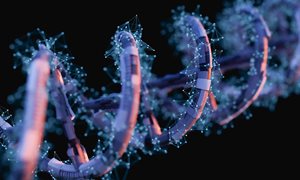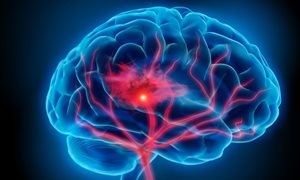
Alex Garanto, Melissa Bärenfänger, Mirian Janssen, and Dirk Lefeber (Theme Metabolic Disorders & Theme Disorders of Movement) together with international colleagues have recently published a new study in the American Journal of Human Genetics identifying a surprisingly dominant genetic cause underlying type I congenital defect of glycosylation with neuromusculoskeletal phenotypes.
Congenital disorders of glycosylation (CDGs) form a group of neurometabolic diseases characterized by hypoglycosylation of proteins. They generally show autosomal recessive inheritance. In this work, 16 individuals from nine families were identified with inherited or de novo heterozygous missense variants in STT3A. STT3A encodes the catalytic subunit of the oligosaccharyltransferase (OST) complex, essential for transfer of glycans to proteins in the Endoplasmic Reticulum.
Affected individuals presented with variable intellectual disability, skeletal anomalies, short stature, and increased muscle tone and muscle cramps. Modeling of the variants in the 3D structure of the OST complex indicated that all variants are located in the catalytic site of STT3A, suggesting a direct mechanistic link to the transfer of oligosaccharides onto nascent glycoproteins. Expression of STT3A at mRNA and steady-state protein level in fibroblasts was normal, while glycosylation was abnormal.
In contrast, previously reported autosomal recessive mutations in STT3A are located outside the catalytic domain and result in lower STT3A expression. In S. cerevisiae, expression of STT3 containing variants induced defective glycosylation of carboxypeptidase Y in a wild-type yeast strain and expression of the same mutants in the STT3 hypomorphic stt3-7 yeast strain worsened the already observed glycosylation defect.
These data support a dominant pathomechanism, in which mutated STT3A protein variants are stably included in the OST complex, thereby resulting in a glycosylation defect. This study describes a first dominant form of CDG.
Publication
https://www.sciencedirect.com/science/article/pii/S0002929721003487?via%3Dihub
Related news items

New genetic defect links cell biology and protein glycosylation
10 November 2021 Peter Linders, Dirk Lefeber and Geert van den Bogaart together with international colleagues have recently reported on novel cell biological insights, by identifying a genetic disorder in syntaxin-5 which allowed to unravel a new mechanism regulating intracellular transportation. go to page
Treatment of brain diseases at risk if neuroscientists can no longer conduct their research
5 August 2021 In order to treat brain diseases such as depression, Alzheimer's or ADHD, more research into the brain is needed. go to page
DCMN big data mini-symposium held on 31 January
5 February 2020 On 31 January, DCMN researchers and collaborators gathered to talk about big data, as a means to work towards Open Science. go to page
Awardees DCMN Junior Researcher round 2019
4 October 2018DCMN launched a call call for Radboudumc junior researcher (PhD) positions. This year 6 positions have awarded.
go to page
Successful teamwork between Neurology and Human Genetics leads to identification of two new ataxia genes
19 September 2018 Thanks to close cooperation between Bart van de Warrenburg (Neurology) and Erik-Jan Kamsteeg (Humans Genetics) two new genes involved in movement disorders were identified. The genes are relevant for autosomal recessive cerebellar ataxia. go to page
